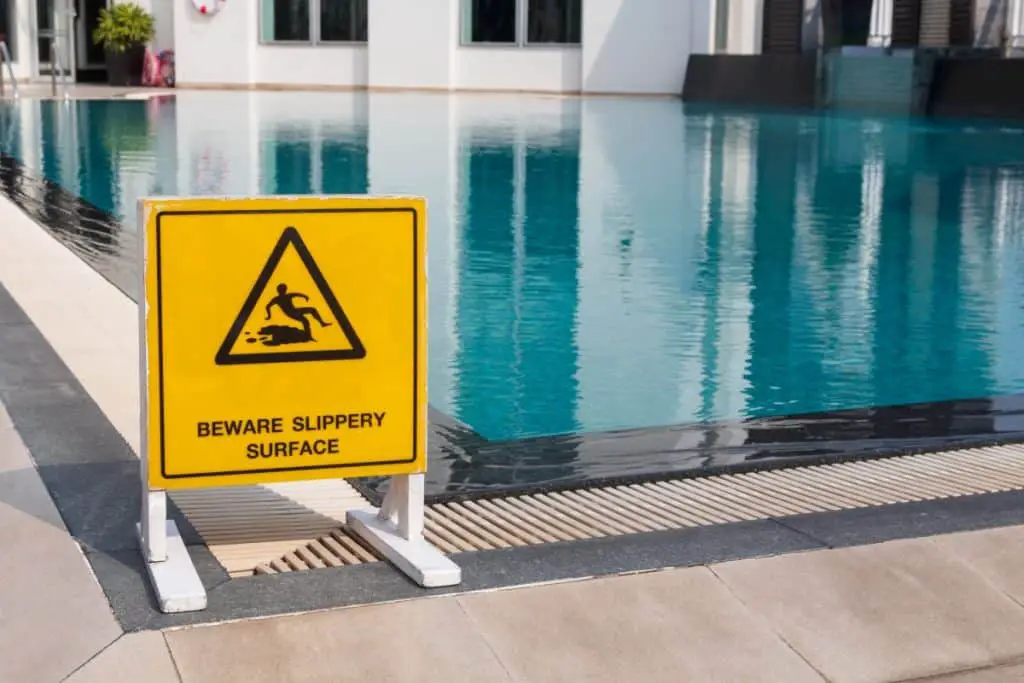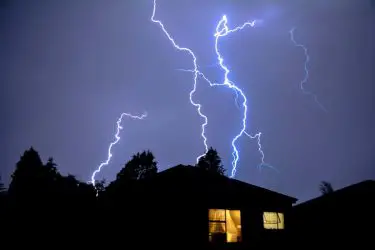I have enjoyed many summer days in the pool taking a dip in the water or even poolside on the deck sunbathing. But have you ever thought about the concrete that is just below your deck chairs? Just like the sunscreen, you apply to protect you while you are soaking up the sun’s rays, you have the choice to apply a seal to the concrete around your pool to ensure its safety.
You need to seal the concrete around a pool to prevent mold and mildew, stains, UV ray damage, and possible injuries due to falls on the surface. Taking time to seal concrete around a pool every 2-3 years to prevent damage will eventually save time, money, stress, and the integrity of the pool itself.
There are multiple reasons why concrete around a pool needs to be sealed. We will examine these in the next few paragraphs.

Table of Contents
What Happens If You Don’t Seal Concrete Around A Pool?
Mold and Mildew
Mold and mildew are types of surface fungi that are pretty common. Both of these fungi grow best in wet conditions. Coupled with damp and shaded areas, they can take over any given area.
Due to the porous nature of concrete, it is very susceptible to the growth of mold if there isn’t a sealant applied to the concrete. Mold and mildew can cause illnesses and increase health risks which can be harmful to yours and other people’s health.
Stains
Concrete is strong, but it isn’t invincible when it comes to stains. Anything left on a surface for too long has the potential to leave a permanent mark. The salt, chlorine, and other chemicals used to treat the pool water can harm the concrete. Even outside items like leaves or dirt can turn your nice pool deck into a stain ridden mess.
Pool Deck Falls

Without sealing a concrete pool, the surface becomes more slippery and, therefore, more prone to accidents. In a given year, 3,582 fatal unintentional injures related to pools were reported to the Centers for Disease Control and Prevention. About 155,000 injuries occur every year in or around swimming pools with many being caused by slipping and falling. Source
UV Rays
The sun’s rays can lead to deterioration of the concrete that surrounds the pool if it is not sealed. The UV rays in the sun can break down the chemical bonds that bind the concrete together cracking and spalling form. This will eventually lead the concrete to become brittle and dust-like, where it will break apart.
Prevention
With the proper sealant, mold and mildew will not be able to reach the damp and dark crevices of the concrete and will not cause any health issues to the people who use the pool. Sealing the concrete also prevents any staining from happening because the true surface will be protected.
Poolside accidents will be reduced with the use of sealant because it helps the concrete be less slippery and provides more grip for one’s feet. It will also prevent the UV rays from damaging the concrete and will help it last longer.
How And When To Seal Your Concrete

There are different types of concrete sealers and some that give different types of finishes. The two most popular types of concrete sealers are silane-siloxane water repellant sealers and acrylic sealers. The finishes of the sealant can range from no-gloss to high-gloss, and there are different tints that can be found in them to transform the color of the concrete around your pool.
You should reseal the concrete around a pool every 2-3 years to prevent any damage that may be caused by the outside elements. It is essential that you seal your pool to protect it from unwanted wear and tear. (In fact, all concrete needs to be sealed to protect it and make it last as long as possible.) You want your pool area to last throughout the years as a summer staple that keeps you and others coming back.



